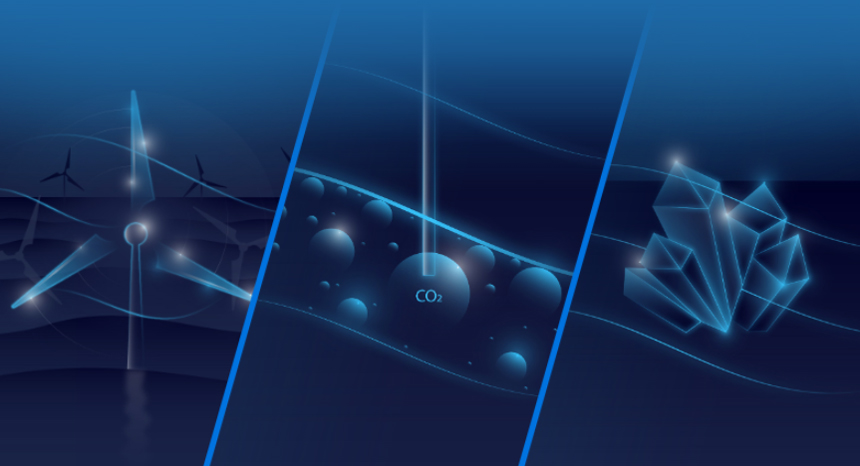New energy used the initial period to assess commercial opportunities within emerging markets related to the ongoing energy transition and identify where PGS could match its assets, competence and capabilities to address industry challenges. The Company has now defined carbon storage (“CS”), offshore wind and marine minerals as markets where there is potential to build a profitable business.

Carbon Storage
CS will be essential to reduce global emissions of carbon dioxide from industrial processes. There is broad consensus that there is an abundance of geological storage in the form of depleted oil and gas fields and saline aquifers. Reliable geophysical data is fundamental in the selection of specific sites for CS. The three key attributes of safe and efficient CS developments are capacity, containment, and injectivity.
PGS has a comprehensive MultiClient data library, which can provide useful insights to geological properties over many prospective storage sites. PGS GeoStreamer data in combination with quantitative measures of reservoir quality can provide robust estimates of geological constraints and control on containment and injectivity. Reliable characterization of the overburden is required to ensure the distribution of geological faults in each area is well understood and does not present an undue containment risk.
The MultiClient data library will not cover all potential storage sites. Where new acquisition is required, PGS’ modern broadband 3D GeoStreamer seismic data is especially well-suited to reliably determine subsurface properties, even in the absence of well-data. Seismic data, combined with PGS expertise
in characterizing the subsurface can be used to minimize uncertainty and failure risk when selecting CS sites. Once the storage site is selected PGS’ integrated business model have the capacity and capability to monitor carbon injection, storage and ensure containment over time.
During 2021 PGS made several MultiClient data sales for development of carbon storage projects. The business expanded further when the Company announced contract awards for new acquisition of seismic data for development of the Endurance and Northern Lights carbon storage projects.
Judging by the CS needs prognosed in many Carbon, Capture and Storage (“CCS”) market reports, there is a significant potential for a market for new seismic acquisition and subsequent repeat 4D monitoring within the carbon storage domain to reach the net zero target set by the United Nations. PGS aims to be a leading provider of subsurface data for carbon storage applications. To get there the Company will partner with the industry to help lowering technical risks of CS developments through existing and new business models.
Offshore Wind
One of the challenges for offshore wind is the growing geographical size of windfarm licenses and leases that could increase the time and cost of wind energy development projects. Many of the new license areas will be close to (or are larger than) 1,000 square kilometers. At this scale, detailed seabed and shallow subsurface modeling will be required over areas comparable to those found in hydrocarbon exploration. Today, even the highest resolution windfarm site surveys typically use 2D profiles, limiting severely the reliability of subsurface information to plan and profile the location. In the oil and gas industry, PGS pioneered efficient solutions for subsurface mapping with the introduction of large-scale 3D broadband seismic. Offshore wind energy projects will benefit greatly from similar efficiency gains, using proven broadband seismic such as PGS’ GeoStreamer and its ultra-high-resolution modifications.
Marine Minerals
The need for critical minerals from several industries and the energy sector is likely to grow significantly according to published reports. To get sufficient access to resources it will be important to extract marine minerals. PGS is participating in an industry consortium in Norway, under the research organization SINTEF, which is working to define best practices to characterize, quantify, and understand uncertainty for seabed mineral resource exploration. Seismic acquisition tests may include data to establish an environmental baseline for exploration for marine minerals. Marine minerals constitute a potential market for PGS; however, it will take time before it is commercially developed.
Other Opportunities
In addition to the three identified areas CS, offshore wind and marine minerals, PGS is also evaluating opportunities within geothermal, which is regarded by many as the most reliable source of renewable energy, as well as one of the least exploited. PGS is also assessing possible business opportunities within nuclear waste disposal and environmental and oceanographic data management. These markets require expertise beyond current core skills and are considered longer-term opportunities.